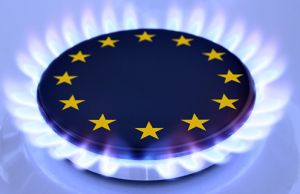
All rights reserved.
You may not copy, reproduce, republish, or otherwise use www.baltic-course.com content
in any way except for your own personal, non-commercial use.
Any other use of content requires the hyperlink to www.baltic-course.com.

Printed: 06.07.2025.
 PrintEU’s energy infrastructure projects: investing additional €217 mln
PrintEU’s energy infrastructure projects: investing additional €217 mln
 |
|---|
The selected projects will increase energy security and help end the isolation of some EU states from EU-wide energy networks. Projects will also contribute to the completion of a European energy market and the integration of renewables into the electricity grid.
The EU is heading on with the modernisation of energy networks in the region to bring all still isolated states into the “united European energy market”. Modern energy networks are also crucial to ensuring efficient use of existing energy resources and therefore key to reaching the EU climate goals.
The European Commissioner for Climate Action and Energy Miguel Arias Cañete underlined that energy projects were targeting the most deficient regions in EU. With the new funding the states in Central and Southern EU will secure supplies and fully integrate Europe's energy market by connecting networks across Europe.
Background
Under the Connecting Europe Facility a total of €5.35 billion has been allocated to trans-European energy infrastructure for the period of 2014-2020.
In order to be eligible for a grant, a proposal has to relate to a project included in the list of 'projects of common interest'. There are currently 195 energy infrastructure projects on the list. When completed, each project would ensure significant benefits for at least two EU states, enhance security of supply, contribute to market integration and further competition as well as reduce CO2 emissions. The list is updated every two years.
Under the first call for CEF-energy in 2014, 34 grants received €647 million in financial support.
In 2015, two CEF-energy calls for proposals were launched. Within the first call for proposals, €150 million was allocated to energy infrastructure projects.
Under the second call, 15 projects out of 24 eligible applications were selected. Proposals that were not selected under this call may apply for funding again under the next call for proposals scheduled for later this year.
Projects in the gas and electricity sectors
In the gas sector, the allocated grants will cover, among others, studies for modernising the Bulgarian gas transmission network, which will improve the possibilities for the transport of gas in the region, notably for the benefit of Greece, Romania, the Former Yugoslav Republic of Macedonia and Turkey.
Funding will also be allocated to studies on the Midcat project, which will help eliminate infrastructure bottlenecks between the Iberian Peninsula and France, and connect gas supplies from Algeria and Spanish LNG terminals with the rest of Europe.
The interconnector linking gas networks in Romania, Bulgaria, Austria and Hungary will also get EU funding. This is an important development for the EU gas market as this will allow gas from the Caspian region and other potential sources, including LNG, to reach Central Europe.
The development of electricity infrastructure will also benefit from CEF financial assistance. This includes environmental and engineering design studies for the Germany-Denmark interconnection, which will help supply Nordic electricity to Central Europe.
Out of the 15 proposals selected for funding, 9 are in the gas sector (financial aid worth €207 million) and six in electricity sector (€10 million). Besides, 13 projects relate to studies, such as environmental impact assessments (€29 million), and two to construction works (€188 million).
The European Commission proposal to select these projects was supported by the CEF Coordination Committee, which consists of representatives from all EU-28 states.
Later this month the Commission will formally adopt the list of proposals which will receive financial assistance under CEF-Energy.
The projects receiving EU support can be seen at:
= https://ec.europa.eu/energy/en/news/energy-eu-invests-217-million-euros-energy-infrastructure;
= Overview of projects and their state of play financed by CEF-energy in 2014 and 2015: https://ec.europa.eu/energy/en/news/energy-eu-invests-217-million-euros-energy-infrastructure;
= CEF Energy 2015 Calls for Proposals: https://ec.europa.eu/inea/en/connecting-europe-facility/cef-energy/apply-funding/cef-energy-calls-proposals-2015;
= Innovation & Networks Executive Agency (INEA):http://inea.ec.europa.eu
Reference: European Commission, press release “Energy: EU invests €217 mln in energy infrastructure, Brussels, 19 January 2016, in:
http://europa.eu/rapid/press-release_IP-16-94_en.htm?locale=en.